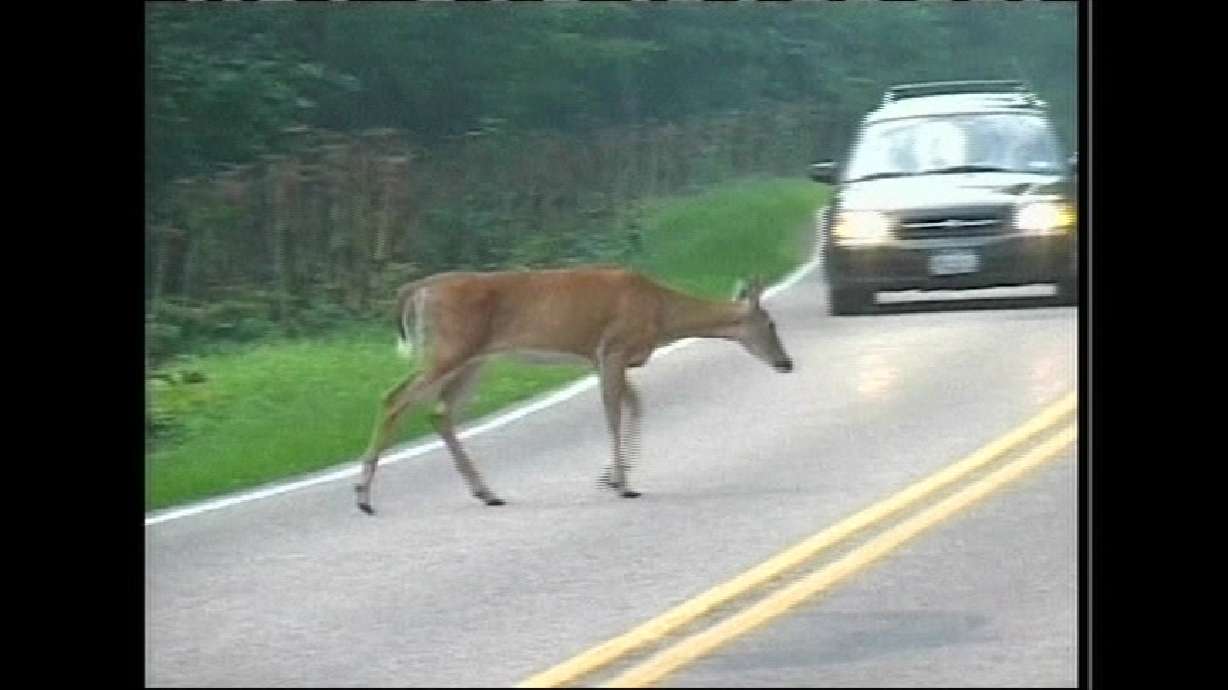Estimated read time: 2-3 minutes
This archived news story is available only for your personal, non-commercial use. Information in the story may be outdated or superseded by additional information. Reading or replaying the story in its archived form does not constitute a republication of the story.
Jed Boal ReportingIt is a dangerous time of year for deer and drivers alike. As the weather gets colder crashes become more frequent. Most of the crashes happen at dawn and at dusk. Wildlife experts call it a growing problem.
During Utah's extended drought, the deer population dropped significantly in Utah, but the number of crashes with deer did not. Colder weather brings them out of the mountains, so it's time to be especially alert.
Nationwide, one and a half million cars collide with deer every year. The Insurance Institute for Highway Safety says deer wrecks account for more than a billion dollars in property damage.
Larry Dalton of the Division of Wildlife Resources has studied deer crashes in Utah more than three decades.
Larry Dalton, DWR Outreach Chief: "It's the speed that really whacks those deer. So if you slow down in those areas where the department of transportation has placed warning signs, deer mortality would go down."
But DWR studies in the 90's found people do not slow down at the warning signs. The deer population is down, but the human population is up and more people now live in deer habitat without taking that into consideration. The crashes kill about three thousand deer each year and they take a human toll as well.
Larry Dalton, DWR Outreach Chief: "We suffer around four human fatalities a year from strikes with big game animals, mostly deer."
There've been a lot of tests with reflectors on the roadside and high-pitched whistles. But Dalton says the data shows none of those work; the only effective way to avoid hitting a deer is to stay alert and slow down.
Larry Dalton, DWR Outreach Chief: "Humans somehow or another learn to live with danger. Our studies show they just don't slow down."
Hitting a deer is more likely around dawn and dusk. Drive defensively and remember to:
- Buckle Up
- Slow Down
- When appropriate use high beams.
- And pay attention to deer-crossing signs
Deer activity picks up in August as fawns start to follow doe around. There's more activity as hunting season starts this Saturday, then snowfall forces deer to lower areas like our valleys.









